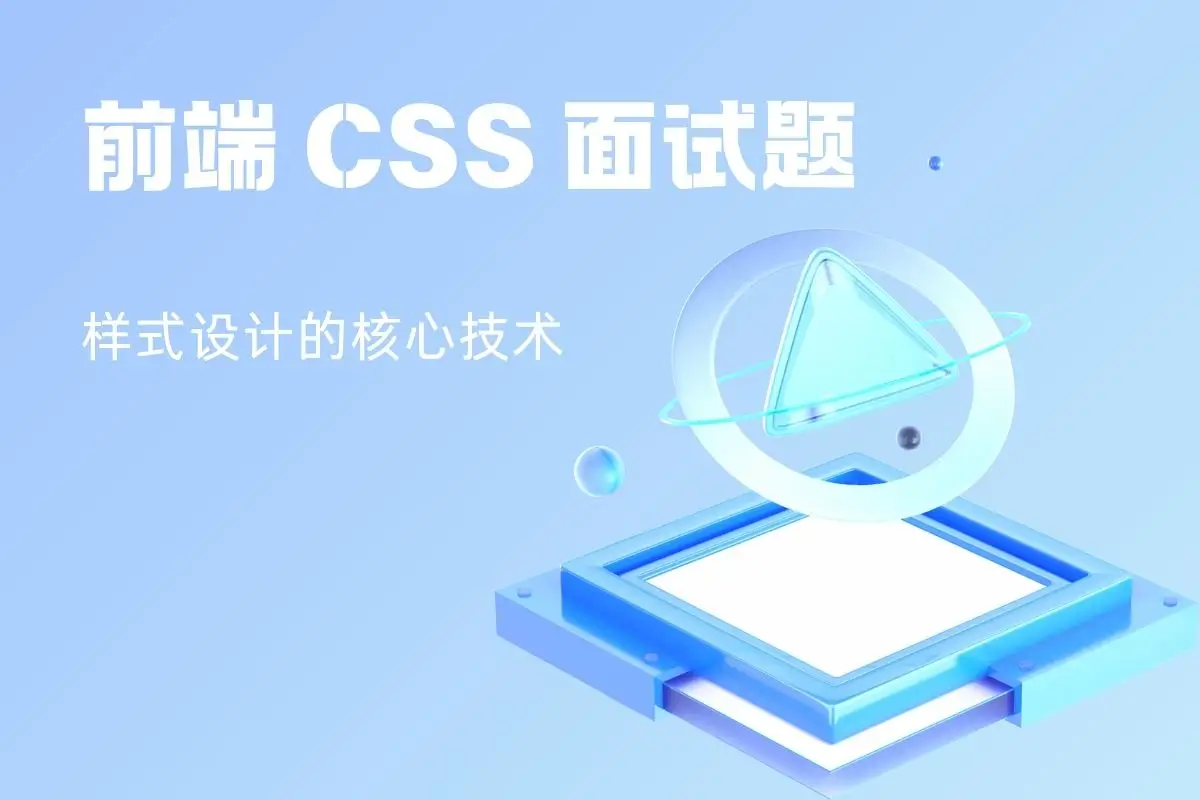这是一个深入理解 CSS 布局机制的高级面试题。display、float 和 position 都能影响元素的盒模型生成和布局,它们之间存在复杂的优先级和相互覆盖关系。
核心原则
CSS 规范定义了当一个元素同时设置了 display、float 和 position 时,某些属性的值会覆盖或改变其他属性的行为。
1. position 拥有最高优先级
当 position 的值不是 static(即 relative、absolute、fixed、sticky)时,它会覆盖 float 的效果,并可能改变 display 的计算值。
float被忽略:如果一个元素的position是absolute或fixed,那么它的float属性将完全失效。规范明确指出,浮动的元素不能是绝对定位的。display被修改:- 对于
position: absolute或fixed的元素,其display的计算值会被强制修改为block或table(如果原本是inline-table)。 - 例如:
display: inline; position: absolute;→ 计算后的display为block。
- 对于
2. float 的优先级次之
当 position 为 static(默认值)时,float 开始生效。
float会改变display:- 一个浮动的元素会自动表现为块级盒子(block-level box),即使它的
display值是inline。 - 规范规定,浮动元素的
display计算值会被强制修改为block。 - 例如:
display: inline; float: left;→ 计算后的display为block。
- 一个浮动的元素会自动表现为块级盒子(block-level box),即使它的
3. display 的基础作用
display 定义了元素的基本盒模型类型(如块级、内联、弹性、网格等),但在 position 和 float 的影响下,其声明值可能不会成为最终的计算值。
总结:优先级与计算规则
- 检查
position:- 如果
position不是static(relative,absolute,fixed,sticky):float的值被忽略(视为none)。display的计算值被设置为:- 如果声明的
display是inline-table→ 计算为table。 - 如果声明的
display是inline,inline-block,inline-flex,inline-grid→ 计算为block。 - 其他情况 → 保持声明的
display值。
- 如果声明的
- 如果
- 检查
float(当position为static时):- 如果
float不是none:display的计算值被设置为:- 如果声明的
display是inline-table→ 计算为table。 - 如果声明的
display是inline,inline-block,inline-flex,inline-grid→ 计算为block。 - 其他情况 → 保持声明的
display值。
- 如果声明的
- 如果
display的最终计算值:- 经过上述规则调整后,得到最终的
display计算值,决定了元素如何参与布局。
- 经过上述规则调整后,得到最终的
示例说明
.example1 {
display: inline;
float: left;
/* position: static (默认) */
/* 结果:float 生效,display 计算为 block */
}
.example2 {
display: inline-block;
position: absolute;
/* float: none (默认) */
/* 结果:position 覆盖,float 无效,display 计算为 block */
}
.example3 {
display: inline;
float: left;
position: fixed;
/* 结果:position 最高优先级,float 被忽略,display 计算为 block */
}
.example4 {
display: flex;
float: right;
/* position: static */
/* 结果:float 生效,但 display 计算仍为 flex(因为 flex 不在被强制修改的列表中)*/
/* 注意:浮动的 flex 容器,其子元素仍按 flex 布局,但容器本身会浮动 */
}注意:
flex和grid容器在浮动时,其display值通常不会被强制修改为block,但容器本身会作为一个整体进行浮动。
对布局的影响
position: absolute/fixed:元素完全脱离文档流,不占据空间,相对于特定参照物定位。float:元素脱离正常流,但仍在文档流中“占据”一个位置(影响后续内容的环绕),直到被清除。display:决定了元素是作为块级、内联、弹性、网格等哪种模型参与布局。
面试加分点
display: contents:这是一个特殊值,它会使元素本身不产生任何盒子,但其子元素保留。当与float或position结合时,行为复杂,通常不推荐混用。- 层叠上下文:
position: absolute/fixed和float都可能创建新的层叠上下文(配合z-index)。 - 现代布局:在 Flexbox 和 Grid 布局普及的今天,
float主要用于文字环绕图片等场景,而position和display仍是核心定位和盒模型控制手段。
总结回答示例
display、float和position的关系遵循一个明确的优先级:
position优先级最高:当position为absolute或fixed时,float会被忽略,且display的计算值会被强制修改为block或table。float次之:当position为static时,float生效,且会强制将inline等内联级display值修改为block。display是基础:它定义了元素的盒模型,但其最终计算值会受到position和float的影响。简单说:
position能覆盖float并修改display,float能修改display。理解这些规则有助于避免布局中的意外行为。
THE END


